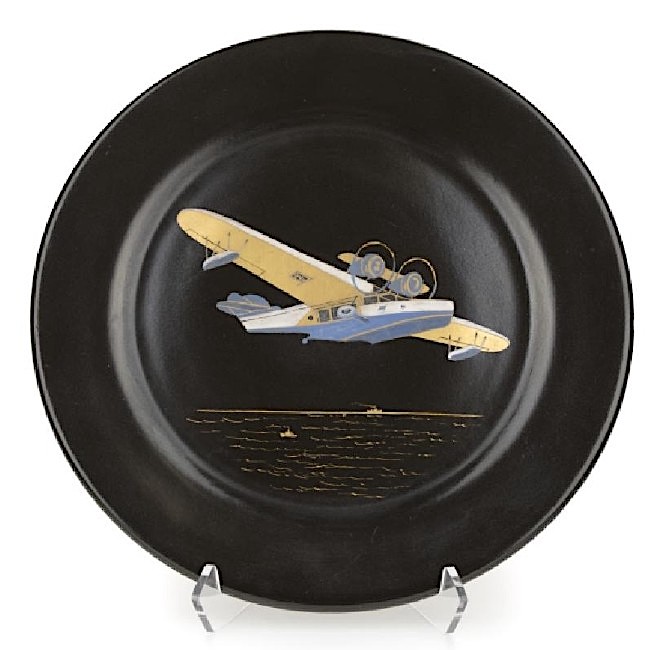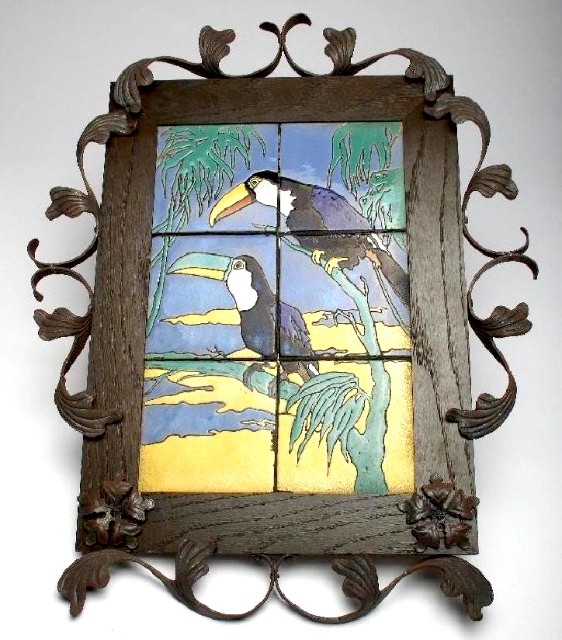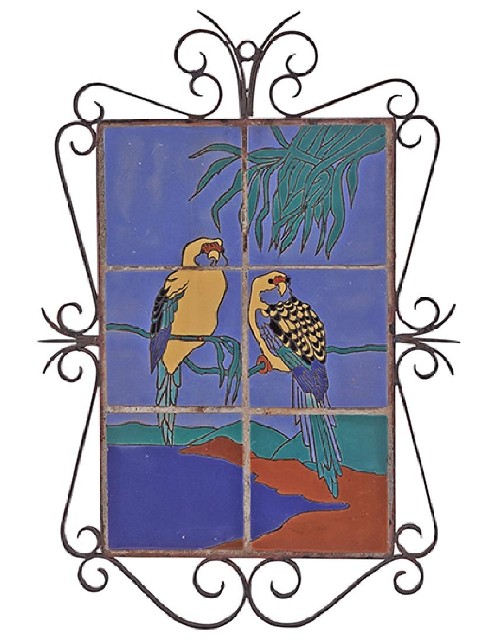
NEW YORK – California’s Catalina Island has been a resort destination, a stopover for pirates and smugglers and the spring training camp of the Chicago Cubs from 1921-1951. To the many tourists who have ever vacationed on or took a day trip to the picturesque island is known for its colorful pottery and tiled wares. Bringing home a piece of Catalina Island pottery or tile was not only the ultimate souvenir, conjuring up fond vacation memories, but also introduced the vivid California aesthetic into homes across the country, be it a Connecticut saltbox, a Manhattan apartment or a Midwest Prairie Style home.
Santa Catalina Island, as it’s more formally known but seldom called, is located in the Channel Islands 20-some miles off the California coast, southwest of Los Angeles. It has been inhabited for thousands of years and began as a tourism hotspot about 125 years ago. Wrigley’s Gum founder William Wrigley Jr., bought the island in 1919 to revive it as a resort, building hotels and a casino here and offering ferry service to the mainland. While digging for freshwater wells, red clay deposits were discovered to be abundant on the island. Wrigley branched into the pottery business, building a tile and brick pottery on a beach in the town of Avalon on the island in 1927. The pottery came to be known as Catalina Clay Products, an arm of Wrigley’s Santa Catalina Island Co.
California Catalina pottery was the state’s first true studio pottery, which made and painted its wares by hand in the decade it operated. “It was the first thing to identify to the region of California as well as to other states that this was a California handicraft that could be bought, enjoyed and nationally represented ‘the California look,’” said John Simon Taylor, specialist for 20th Century furniture and decorative arts at John Moran Auctioneers, Inc. in Monrovia, Calif.

The pottery started out making novelty wares, plaques, tiles and bookends depicting hand-painted scenes and the wildlife found on Catalina, especially its birds. Within a year, the potters began glazing items, which were being sold on the mainland. Some of its designs also featured Mexican scenes. Its pottery decoration was partially inspired by the Spanish Revival Movement as well as Art Deco styles. The pottery ran independently until the mid-1930s when Wrigley sold it to one of California’s Big 5 pottery firms, Gladding-McBean.
“During the 1929-36 period, in which Catalina produced tableware, they strove to be known as a ‘quality pottery’ – a line used by many California potteries when faced with intense competition from the Ohio Valley potteries,” according to the Maximalist Colorware History and Design website. Because the competition was steep, Catalina sought to distinguish itself by selling only in high-end stores across the country in a variety of style lines.

Its wares were typically labeled for sale as CatalinaWare, Catalina “Avalonware,” Catalina Pottery and Catalina Tile. They were originally sold not only on the island but also in Los Angeles and in the Arizona Biltmore Hotel in Phoenix. A network of department stores also carried Catalina dinnerware and art pottery.
A hallmark of both Catalina pottery and tile is color. The pottery’s brightly colored items were used extensively in Avalon’s buildings, both interiors and exteriors.
“In my opinion, what is so enticing about Catalina Island Pottery is the brightly colored glazes that were used by the factory – particularly, the blue and green glazes are reminiscent of the sea,” said Cristina Campion, Associate Director, 20th Century Design, Clars Auction Gallery in Oakland, Calif. “This really harkens back to the company’s origins, since they were originally located on the beach in Avalon, Santa Catalina Island. Finding a piece of Catalina pottery in blue or green is like hunting for sea glass in the sand on a summer vacation.”

Unlike fellow California potter J.A. Bauer, which was a high-volume production outfit, Catalina stayed true to its roots as a studio pottery. “Catalina Pottery stayed local, it stayed as a handcrafted material,” Taylor said. “They developed very specific colors that even though other companies did not copy per se, they copied the palette – the right kind of red-orange, the right kind of blue, the right kind of green and the right kind of ivory. If you look at a comparison in Bauer, you see the same palette, but done completely differently.”
The market was at a peak for Catalina wares from the late ’80s, through the ’90s and into the early 2000s as Catalina Pottery set the bar for the California Revival furnishings and decorative arts movement, he said, but standout pieces still are desirable and command strong interest today.

While tabletop dinnerware is what one mostly sees, from bowls and plates to serving pieces, the specialty items are what whets buyers’ appetites. Pieces that reflect island landmarks are especially desirable from the island’s famous aviary to the Wrigley Airport. “Anytime you see a biplane or anything that is associated with the Catalina airport, that raises the bar enormously,” Taylor said. Games tables, such as the backgammon table sold here in April 2020 for a respectable figure, are also hot items. “That is a game-changer because those are standout items that have always been rarities and they are rarities today. Even though the audience has narrowed in regard to auction and retail, those items will always find a top-dollar buyer.”



